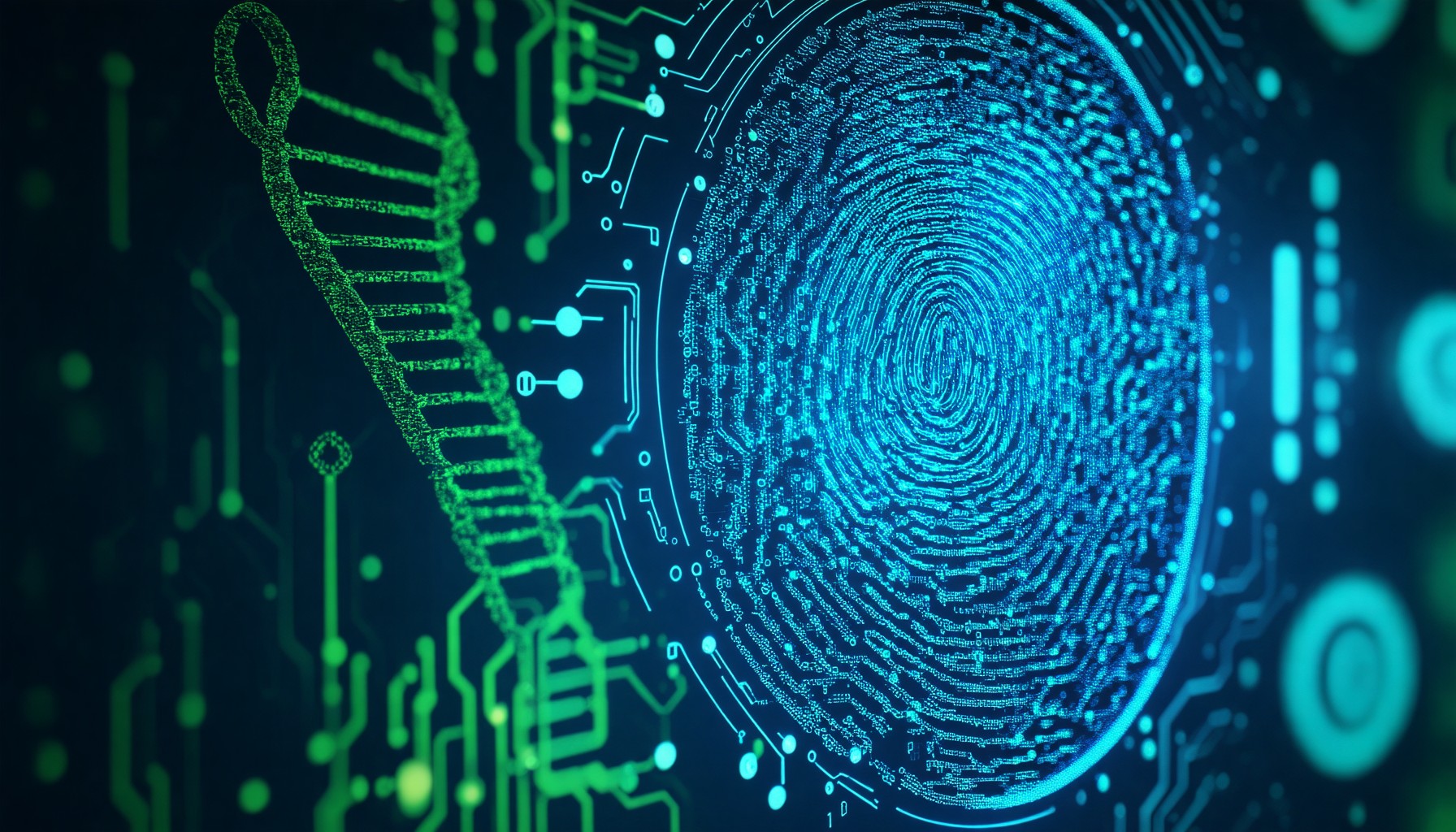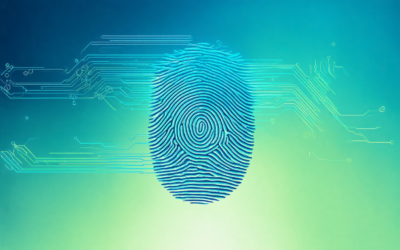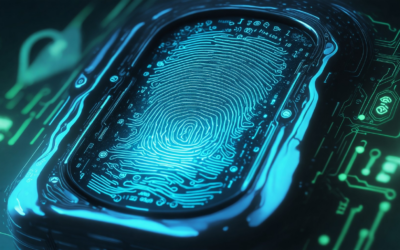Key Takeaways
- Biometrics Products Revolutionize Security: Utilizing unique physical traits, biometrics offers enhanced security compared to traditional methods like passwords.
- Variety of Biometric Methods: Common biometrics examples include fingerprint scanning, facial recognition, and iris scanning, making security more efficient and user-friendly.
- Increased Demand for Biometric Solutions: As identity theft and data breaches rise, organizations are adopting biometric technology to protect sensitive information.
- Understanding Biometrics Risks: Awareness of biometric data security and privacy issues is crucial, as these traits are permanent and cannot be changed if compromised.
- Future Growth of Biometric Market: The biometric industry is expected to expand significantly, driven by technological advancements and increasing investment in security solutions.
- Choosing the Right Biometric Products: Consider accuracy, integration capabilities, and scalability to ensure the selected biometric solution meets your security needs effectively.
In an era where security is paramount, biometrics products have emerged as a revolutionary force in the biometric industry. But what exactly are biometrics? This article delves into the definition of biometrics and explores its significance in today’s security landscape. We will examine the various examples of biometrics that are now part of our daily lives, and uncover the science behind biometric technology. Additionally, we will discuss the numerous benefits of using biometric solutions and the potential risks associated with them in the digital age. As we navigate through the current trends and future projections of the biometric market, we will also provide insights on how to choose the right biometric products for your needs. Join us as we explore how biometrics is reshaping security and what it means for the future.
What are biometrics?
Biometrics refers to the measurement and statistical analysis of people’s unique physical and behavioral characteristics. This technology is increasingly utilized in various sectors, particularly in security, to verify identities and enhance safety protocols. The biometrics definition encompasses a range of methods, including fingerprint recognition, facial recognition, iris scanning, and voice recognition. These methods leverage biometric data to create a reliable and efficient means of identification.
Understanding the Definition of Biometrics
The biometrics meaning extends beyond simple identification; it represents a sophisticated approach to security that relies on the uniqueness of individual traits. For instance, a biometric database stores these unique identifiers, allowing for quick and accurate verification. This technology is not only used in personal devices like smartphones but also in larger systems such as airport security and law enforcement. As the demand for secure access increases, understanding biometrics becomes essential for both consumers and businesses alike.
The Importance of Biometrics in Today’s Security Landscape
In today’s digital age, the importance of biometrics cannot be overstated. With rising concerns about data breaches and identity theft, organizations are turning to biometrics solutions to safeguard sensitive information. These solutions provide a higher level of security compared to traditional methods like passwords or PINs, which can be easily compromised. For example, the use of biometric products such as fingerprint scanners and facial recognition systems has become commonplace in various industries, enhancing security measures significantly.
As we explore the evolving landscape of the biometric technology market, it’s clear that these innovations are not just trends but essential tools for modern security. For those interested in the latest advancements, visiting Understanding biometric products can provide deeper insights into how these technologies are shaping our world.
What is biometrics?
Exploring the Meaning of Biometrics
Biometrics refers to the measurement and statistical analysis of people’s unique physical and behavioral characteristics. This technology is increasingly vital in various sectors, especially in security and identification. The biometrics definition encompasses a wide range of traits, including fingerprints, facial recognition, iris patterns, and even voice recognition. As we delve into what are biometrics, it’s essential to understand that these unique identifiers are stored in a biometric database and used to authenticate individuals in a secure manner.
Key Biometrics Examples in Everyday Use
In our daily lives, we encounter numerous biometrics examples that enhance security and convenience. Common applications include:
- Fingerprint Scanners: Widely used in smartphones and security systems, these devices authenticate users by analyzing their unique fingerprint patterns.
- Facial Recognition: Employed in various security systems, this technology identifies individuals by analyzing facial features, making it a popular choice for surveillance and access control.
- Iris Scanning: This method uses the unique patterns in the colored part of the eye for identification, often found in high-security environments.
- Voice Recognition: Utilized in virtual assistants and security systems, this technology verifies identity through voice patterns.
These biometric products not only streamline access to devices and services but also significantly enhance security measures. As the biometrics industry continues to evolve, the integration of these technologies into everyday applications will only increase.
How do biometrics work?
Understanding how biometrics work is essential for grasping their significance in modern security systems. At its core, biometrics technology relies on unique physical or behavioral characteristics to identify individuals. This process involves several key components, including biometric data collection, analysis, and storage in a biometric database.
The Science Behind Biometric Technology
Biometric technology operates by capturing specific traits, such as fingerprints, facial recognition, or iris patterns. These traits are then converted into digital data through sophisticated algorithms. For instance, when a fingerprint is scanned, the biometric equipment analyzes the unique ridges and valleys of the fingerprint, creating a digital representation. This data is then compared against stored biometric data in a secure database to verify identity.
Different biometric systems utilize various methods for data capture and analysis. For example, facial recognition systems employ advanced imaging techniques and machine learning to identify individuals based on facial features. Similarly, voice recognition systems analyze vocal patterns to authenticate users. The accuracy and reliability of these systems are continually improving, making them increasingly vital in security applications.
The Role of Biometric Data in Security Systems
Biometric data plays a crucial role in enhancing security measures across various sectors. By utilizing biometric solutions, organizations can significantly reduce the risks associated with traditional authentication methods, such as passwords or PINs, which can be easily compromised. Biometric products provide a higher level of security because they rely on unique individual traits that are difficult to replicate.
Moreover, the integration of biometric technology into security systems streamlines access control processes. For instance, in workplaces, employees can gain entry through fingerprint scanners or facial recognition systems, eliminating the need for physical keys or access cards. This not only enhances security but also improves user convenience.
As the biometric industry continues to evolve, the demand for biometric products is expected to grow. This growth is driven by the increasing need for secure authentication methods in various applications, from personal devices to large-scale security systems. To explore more about the impact of biometrics on security solutions, visit our page on understanding biometric products.
For those interested in leveraging the benefits of biometrics, creating an account can provide access to exclusive offers and insights into the latest biometric solutions. Start your journey by creating an account today!
What are the benefits of biometrics?
Biometric products offer a range of advantages that enhance security and streamline user experiences. As we delve into the benefits of biometrics, it’s essential to understand how these technologies can transform our interactions with devices and systems.
Advantages of Using Biometric Products
Biometric solutions leverage unique physical characteristics to verify identity, providing several key benefits:
- Enhanced Security: Biometric data, such as fingerprints or facial recognition, is difficult to replicate, making it a more secure option compared to traditional passwords.
- Convenience: Users can access systems quickly without the need to remember complex passwords, improving overall user experience.
- Reduced Fraud: The use of biometric authentication significantly lowers the risk of identity theft and unauthorized access.
- Scalability: Biometric systems can be easily integrated into existing security frameworks, making them suitable for various applications, from personal devices to large corporate environments.
These advantages highlight why many organizations are investing in biometric products as part of their security strategies.
How Biometrics Solutions Enhance Security Measures
Biometric technology not only improves security but also enhances operational efficiency. Here’s how:
- Real-Time Verification: Biometric systems can authenticate users in real-time, allowing for immediate access and reducing wait times.
- Data Integrity: Biometric databases are designed to securely store and manage biometric data, ensuring that sensitive information is protected against breaches.
- Compliance with Regulations: Many industries are adopting biometrics to meet stringent security regulations, ensuring compliance while enhancing security protocols.
- Integration with Other Technologies: Biometrics can work alongside other security measures, such as surveillance systems and access controls, creating a comprehensive security ecosystem.
By implementing biometric solutions, organizations can significantly bolster their security measures while providing a seamless user experience.
What are the risks associated with biometrics?
As the adoption of biometric products continues to rise, understanding the associated risks is crucial. While biometrics offer enhanced security and convenience, they also present unique challenges that users and organizations must navigate. This section delves into the potential risks linked to biometric technology and the implications for users.
Understanding Biometrics Risks in the Digital Age
One of the primary concerns surrounding biometrics is the security of biometric data. Unlike passwords, which can be changed if compromised, biometric traits such as fingerprints or facial recognition are permanent. If a biometric database is breached, the stolen data cannot be reset or altered, leading to long-term vulnerabilities.
- Data Breaches: High-profile data breaches have exposed sensitive biometric statistics, raising concerns about the safety of personal information.
- Privacy Issues: The collection and storage of biometric data can lead to privacy violations, as individuals may not be fully aware of how their data is used or shared.
- False Positives and Negatives: Biometric solutions are not infallible. Errors in recognition can lead to unauthorized access or denial of service, impacting user experience.
Analyzing Biometric Statistics and Their Implications
Research on biometrics reveals significant trends and statistics that highlight the risks involved. For instance, a study by the National Institute of Standards and Technology (NIST) indicates that while biometric systems can improve security, they also face challenges in accuracy and reliability. Understanding these statistics is vital for organizations considering the implementation of biometrics products.
- Market Growth: The biometric market is projected to grow significantly, but with this growth comes increased scrutiny regarding data protection.
- Consumer Awareness: As consumers become more aware of biometrics risks, companies must prioritize transparency and security measures to build trust.
- Regulatory Compliance: Organizations must navigate complex regulations surrounding biometric technology to avoid legal repercussions.
By understanding these risks and implications, users can make informed decisions about adopting biometric solutions while companies can enhance their security protocols to protect sensitive biometric data.
What is the biometric market size?
The biometric market has experienced significant growth in recent years, driven by advancements in technology and an increasing demand for security solutions. As organizations and individuals seek to enhance their security measures, the adoption of biometric products has surged. The biometric industry is projected to continue expanding, with a focus on innovative biometric solutions that cater to various sectors, including healthcare, finance, and government.
Current Trends in the Biometric Industry
Several key trends are shaping the biometric market today:
- Integration with AI: The incorporation of artificial intelligence into biometric systems enhances accuracy and efficiency, allowing for real-time data processing and improved user experiences.
- Mobile Biometrics: With the rise of smartphones, mobile biometric solutions, such as fingerprint and facial recognition, are becoming increasingly popular for secure transactions and access control.
- Cloud-Based Solutions: The shift towards cloud computing enables easier management of biometric data and reduces the need for extensive on-premises hardware.
- Regulatory Compliance: As privacy concerns grow, biometric companies are focusing on compliance with regulations such as GDPR, ensuring that biometric data is handled securely and ethically.
Future Projections for the Biometric Technology Market
Looking ahead, the biometric market is expected to witness substantial growth. Analysts predict that the market size will reach billions of dollars by the end of the decade, fueled by:
- Increased Investment: More funding is being directed towards research on biometrics, leading to the development of advanced biometric products that offer enhanced security features.
- Growing Demand for Biometric Solutions: As businesses and consumers prioritize security, the demand for biometric solutions will continue to rise, particularly in sectors like banking and healthcare.
- Technological Advancements: Innovations in biometric hardware and software will drive efficiency and effectiveness, making biometric systems more accessible and user-friendly.
For those interested in exploring biometric products, understanding these trends and projections can help in making informed decisions about the best solutions for their needs.
How to choose the right biometric products?
Choosing the right biometric products is crucial for ensuring effective security and user convenience. With numerous options available in the market, understanding the key factors can help you make an informed decision.
Factors to Consider When Selecting Biometric Equipment
- Type of Biometric Technology: Different biometric technologies, such as fingerprint recognition, facial recognition, and iris scanning, serve various purposes. Assess your specific needs to determine which technology aligns best with your security requirements.
- Accuracy and Reliability: Look for products that offer high accuracy rates and low false acceptance/rejection rates. Research on biometrics can provide insights into the performance of different biometric systems.
- Integration Capabilities: Ensure that the biometric equipment can seamlessly integrate with your existing systems. Compatibility with software and hardware is essential for smooth operation.
- Scalability: Consider whether the biometric solution can scale with your organization’s growth. As your needs evolve, the ability to add more devices or features can be a significant advantage.
- Cost: Evaluate the total cost of ownership, including initial purchase, installation, and maintenance. Compare prices among various biometrics costs and services to find a solution that fits your budget.
Leading Biometric Companies and Their Innovations
Several biometrics companies are at the forefront of innovation in the biometric technology market. Here are a few notable examples:
- NEC Corporation: Known for its advanced facial recognition technology, NEC provides solutions that are widely used in security and surveillance.
- Gemalto: A leader in digital security, Gemalto offers a range of biometric solutions, including fingerprint and facial recognition systems.
- Suprema: This company specializes in biometric access control and time attendance solutions, known for their high accuracy and reliability.
- Biometics: At Shop Biometics, we focus on delivering potent liquid vitamins that enhance overall wellness, supporting your health alongside advanced biometric solutions.
By considering these factors and exploring the innovations from leading biometric companies, you can select the right biometric products that meet your security needs effectively.






